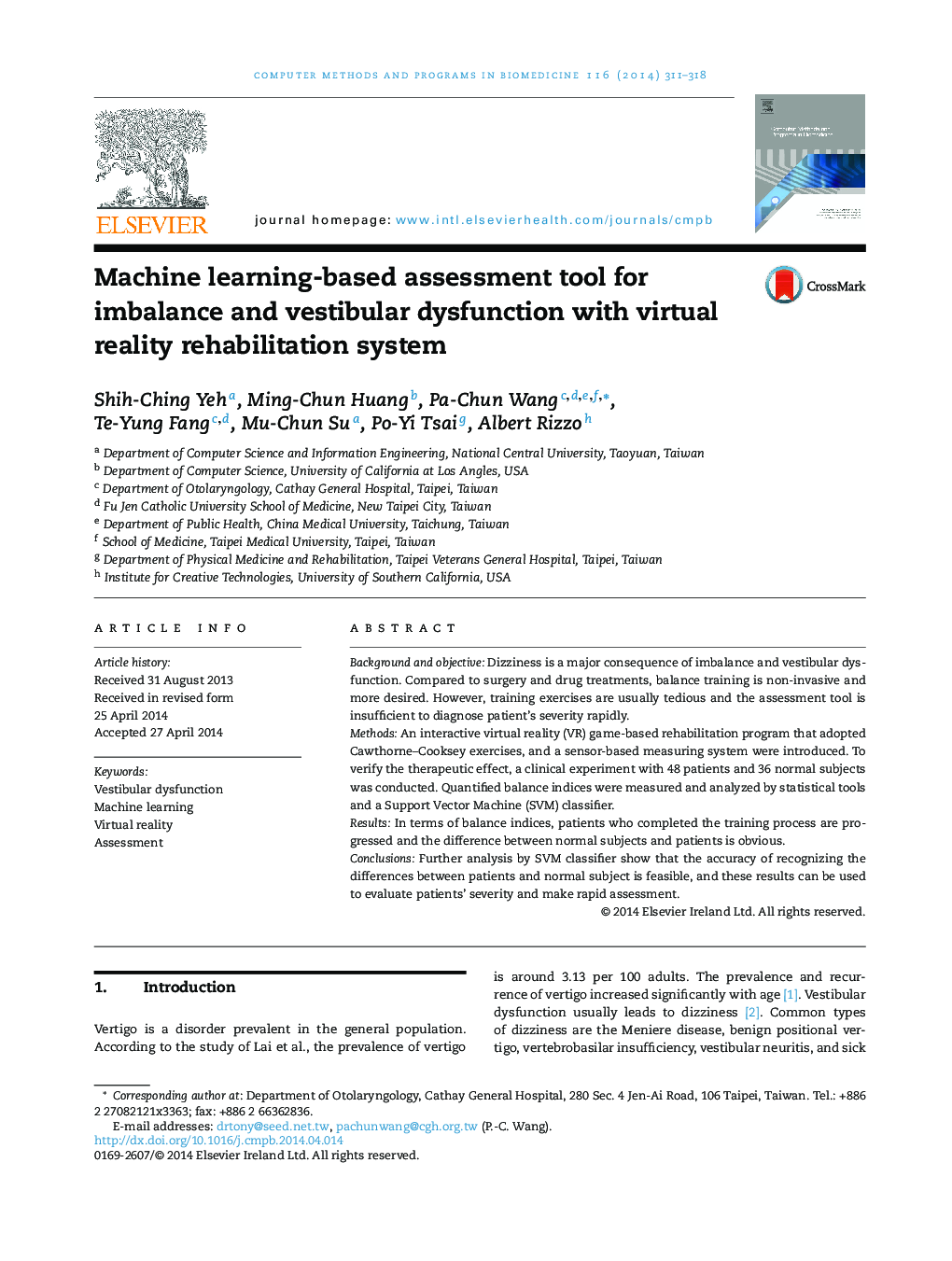| Article ID | Journal | Published Year | Pages | File Type |
|---|---|---|---|---|
| 466457 | Computer Methods and Programs in Biomedicine | 2014 | 8 Pages |
Background and objectiveDizziness is a major consequence of imbalance and vestibular dysfunction. Compared to surgery and drug treatments, balance training is non-invasive and more desired. However, training exercises are usually tedious and the assessment tool is insufficient to diagnose patient's severity rapidly.MethodsAn interactive virtual reality (VR) game-based rehabilitation program that adopted Cawthorne–Cooksey exercises, and a sensor-based measuring system were introduced. To verify the therapeutic effect, a clinical experiment with 48 patients and 36 normal subjects was conducted. Quantified balance indices were measured and analyzed by statistical tools and a Support Vector Machine (SVM) classifier.ResultsIn terms of balance indices, patients who completed the training process are progressed and the difference between normal subjects and patients is obvious.ConclusionsFurther analysis by SVM classifier show that the accuracy of recognizing the differences between patients and normal subject is feasible, and these results can be used to evaluate patients’ severity and make rapid assessment.
